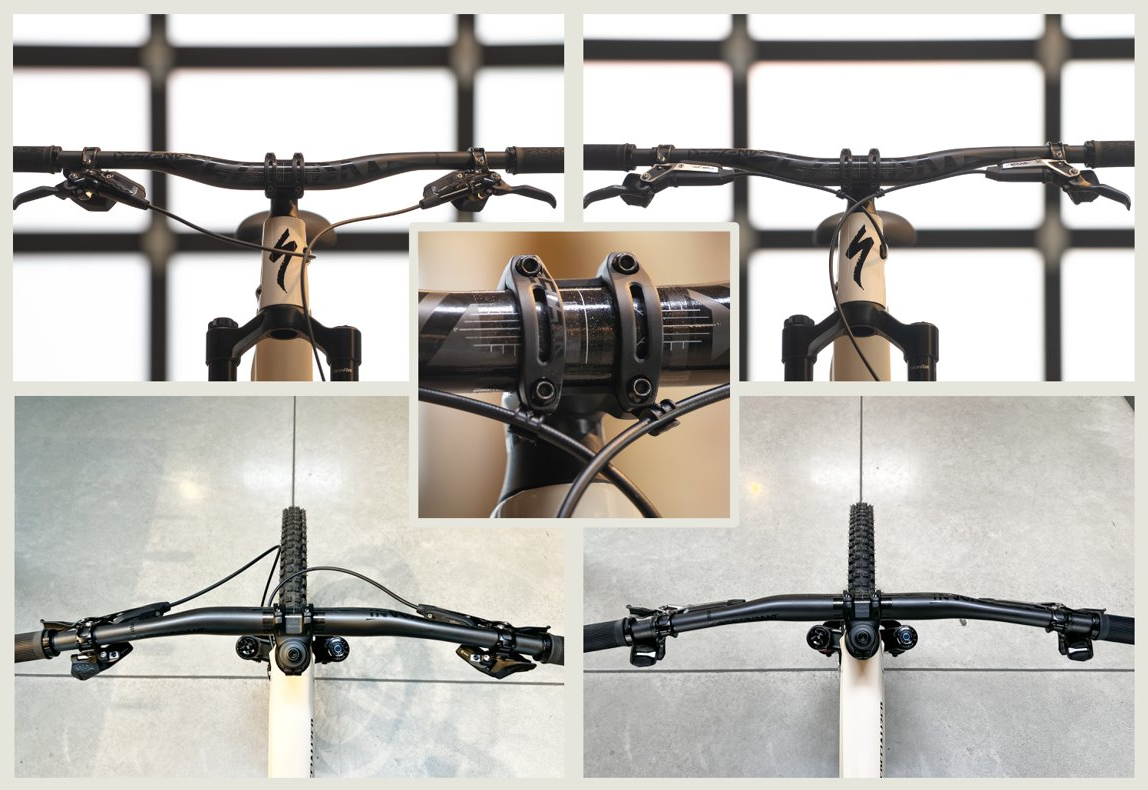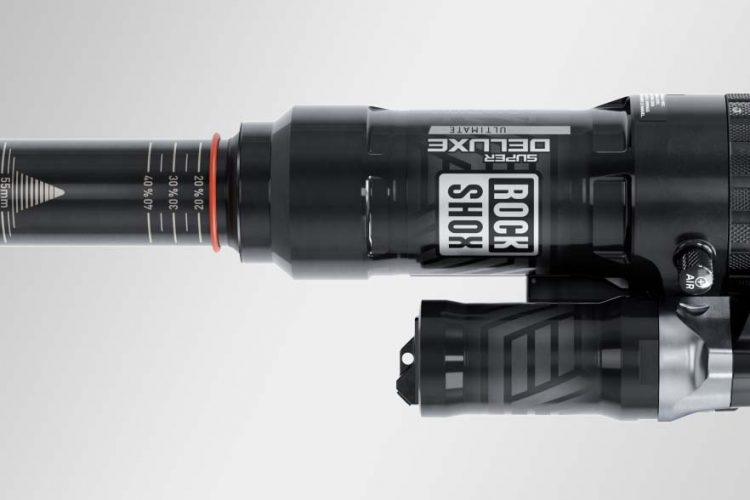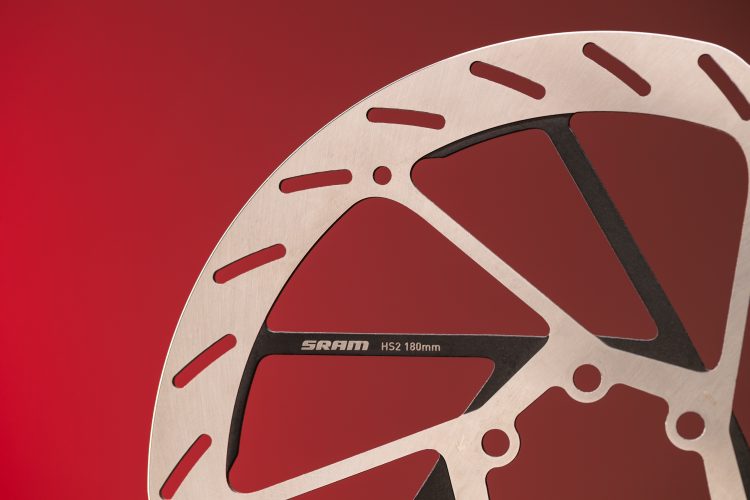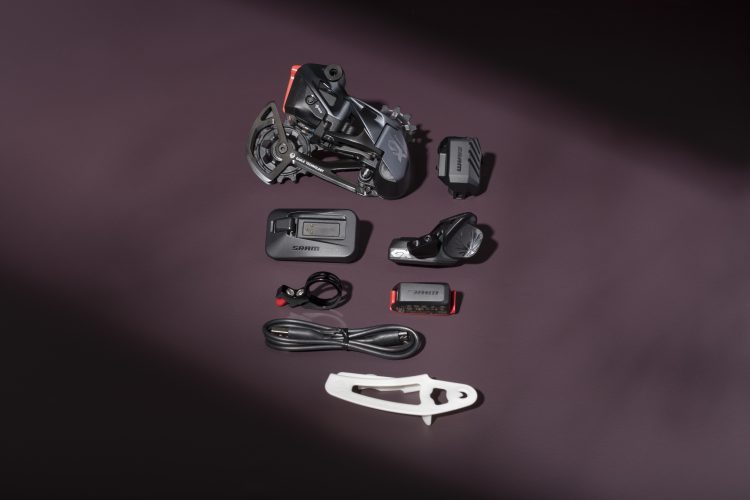
SRAM is officially getting rid of the derailleur hanger. At least, as it relates to their latest mountain bike drivetrain system. Announced today, SRAM Eagle Transmission rethinks every piece of the bicycle drivetrain and forges a new path from crank to cassette. Here are the things to know.
See also: SRAM X0 Eagle Transmission Review and SRAM GX Eagle Transmission Review

No derailleur hanger = simpler setup
Remember the Universal Derailleur Hanger (UDH)? That’s gone in SRAM Eagle Transmission drivetrains. The rear derailleur mounts directly to UDH-compatible frames at the axle, gripping both sides of the frame for what SRAM says is a stronger connection than a traditional system. According to SRAM, there are currently 210 UDH-compatible bike frames available, with many more on the way.
With a standardized frame interface and no derailleur hanger to account for, the new Eagle Transmission derailleurs do away with adjustment screws for easy installation and setup. This has mostly been the case with the wireless, AXS derailleurs previously available, and is a big advantage of electronic systems over mechanical ones. To be clear, Eagle Transmission drivetrains are all electronic, with no mechanical options available.
Another big change is the orientation of the derailleur cage to the chainring. SRAM says Eagle Transmission features an “Inline Cage” that always points toward the chainring in every gear. Imagine the cage swiveling along an arc with the chainring at the center when it shifts between gears. This is said to make shifts smoother and quieter than a linear system.
Eagle Transmission has a 55mm chainline, bringing the measure in line for both Boost and Super Boost rear spacing. The cassette moves 2.5mm outward to achieve the new chainline.

A new lower “Magic Pulley,” included on the higher level derailleurs, is designed to keep spinning even if a stick gets lodged in between the tiny spokes of the pulley cog. It’s a neat trick, but doesn’t really address the more likely scenario of a stick getting stuck between the chain and the pulley teeth. And when that does happen, hopefully it’s not a big enough stick to break the derailleur.
If an Eagle Transmission derailleur is damaged, SRAM notes the units are designed to be rebuildable, which is a nice change. It’s not clear if all of the pieces shown here will be available for aftermarket purchase individually, and if so, at what price.
This transmission isn’t automatic, but it shifts under load
In a document answering frequently asked questions, SRAM notes the Eagle Transmission drivetrain is meant to be shifted under load, and as a result it might sound rough in the repair stand. The new system is optimized for a properly sagged full suspension bike, taking into account chain growth and contraction while riding.

SRAM achieves shifts under load thanks to X-SYNC tooth profiles designed to make shifts up and down smooth and quick. The XX Eagle SL cassette features all aluminum construction and is said to be SRAM’s lightest yet.
Eagle Transmission comes in a number of configurations and three build levels: XX SL (highest), XX, and X0. SRAM also has several options available to work with common eMTB motor systems, including competitor Shimano’s STEPS. Aesthetics clearly plays a role in many of the design decisions and finishes, right down to the eye-catching flat top chain.
Though Eagle Transmission offers 12 speeds like existing systems, the new parts are not compatible with previous Eagle components, with the exception of Eagle Transmission chainrings which should work with regular Eagle chains.
Complete SRAM Eagle Transmission drivetrain groups are priced at about $1,599 for the X0 set and $2,199 for XX SL. For an additional fee buyers can also choose a groupset with a built-in power meter or a set that’s e-bike compatible.
Update: online retailers including The Pro’s Closet already have groupsets available for purchase.

SRAM Stealth brakes are designed to match
Along with today’s drivetrain news, SRAM is also rolling out a new line of brakes dubbed Stealth. The brand notes that a big part of the redesign is to bring the Code and Level brake aesthetic more in line with Eagle Transmission.
One notable change with Stealth brakes is hose management, as shown in the series of photos above. SRAM designed the levers to cut a lower profile, with a more in-line hose exit for a neater cockpit. Not only that, they’re providing hose clamps that attach at the stem, allowing brake hoses to tuck under the bar and out of the way. While other brands have developed brake systems that place hydraulic hoses inside the bars for a clutter-free cockpit, this seems to get most of the way there without a lot of extra hassle.


The new Stealth brakes will be priced at $185-300 per wheel. SRAM Eagle Transmission and Stealth brakes will be available beginning this month are available now.




















